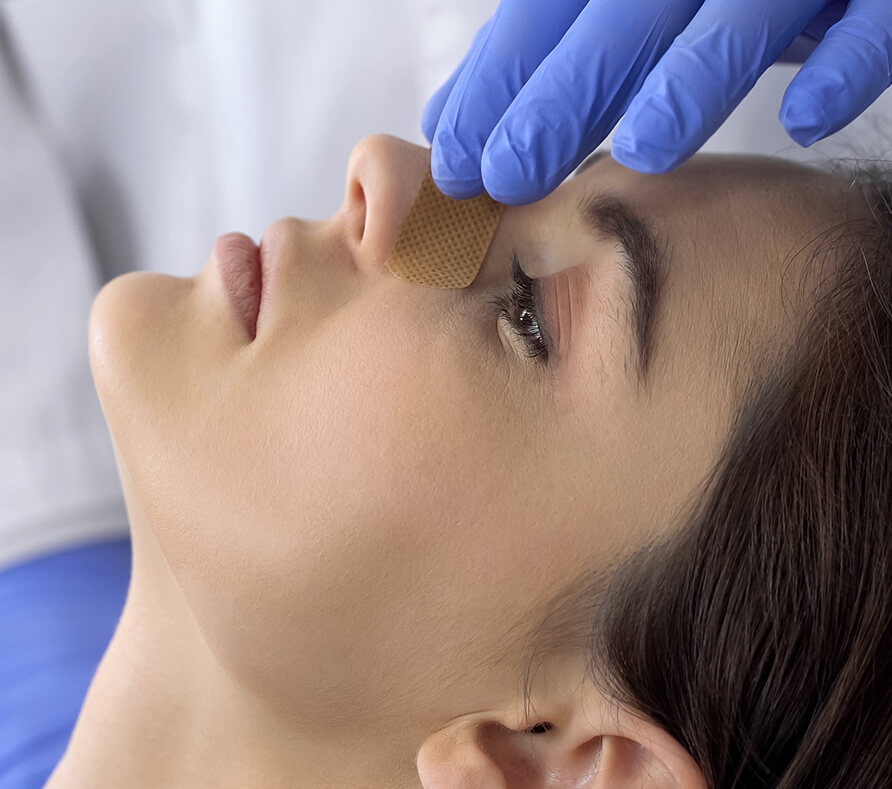Rhinoplasty, commonly known as a nose job, is a popular cosmetic and functional procedure aimed at reshaping the nose for aesthetic or medical reasons. There are different types of rhinoplasty procedures available, each designed to address specific issues related to the nose’s appearance or function. Whether it’s for cosmetic enhancement, medical reasons, or a combination of both, understanding the different types of rhinoplasty in Dubai(تجميل الأنف في دبي )can help you make an informed decision. This article delves into the various rhinoplasty options and what each procedure entails.
Traditional Rhinoplasty (Closed Rhinoplasty)
Traditional rhinoplasty, also known as closed rhinoplasty, is a procedure in which all incisions are made inside the nostrils. This technique is primarily used for reshaping the nose and making aesthetic changes, such as reducing the size of the nose, refining the tip, or straightening the bridge. Since the incisions are hidden within the nostrils, there is no visible scarring on the outside of the nose. Closed rhinoplasty is generally recommended for patients who need minor changes to the structure of the nose, as it provides a quicker recovery time and less post-operative swelling.
Open Rhinoplasty
Open rhinoplasty is a more invasive procedure in which an incision is made across the columella, the small strip of tissue that separates the nostrils, in addition to incisions inside the nostrils. This approach allows the surgeon better access to the internal structures of the nose, making it ideal for more complex procedures that involve significant reshaping, such as correcting nasal asymmetry, altering the tip, or making structural adjustments to the nasal framework. Although open rhinoplasty leaves a small scar at the base of the nose, the scar typically fades over time and becomes barely noticeable. This technique is often used for patients requiring more extensive changes.
Ethnic Rhinoplasty
Ethnic rhinoplasty is a specialized approach to nose surgery that takes into account the unique facial features and cultural heritage of the patient. This procedure is designed to preserve or enhance the characteristics that are important to the individual’s ethnicity while making improvements to the nose’s shape and function. For example, ethnic rhinoplasty for African-American or Asian patients may involve reducing the size of the nasal bridge, enhancing the nasal tip, or refining the nostrils without compromising the ethnic traits that define their appearance. The goal is to create a harmonious nose that complements the patient’s overall facial features.
Septoplasty (Functional Rhinoplasty)
Septoplasty, or functional rhinoplasty, is a surgical procedure aimed at correcting a deviated septum, which is a condition where the nasal septum (the cartilage and bone that separates the nostrils) is off-center. A deviated septum can lead to breathing difficulties, chronic sinus infections, or snoring. Septoplasty focuses on improving airflow by repositioning or removing parts of the septum to restore balance and function to the nasal passages. Unlike cosmetic rhinoplasty, septoplasty is typically covered by insurance when done for medical reasons, as it improves the functionality of the nose.
Tip Plasty
Tip plasty, also known as nasal tip surgery, is a more limited rhinoplasty procedure that focuses solely on altering the appearance of the nasal tip. This procedure can address concerns such as a bulbous, drooping, or asymmetric nasal tip. It is often performed in conjunction with other rhinoplasty procedures, but it can also be done as a standalone surgery. Tip plasty is a less invasive option compared to full rhinoplasty, as it involves fewer incisions and a shorter recovery time. This procedure is ideal for patients who are satisfied with the overall shape of their nose but want to improve the appearance of the tip.
Revision Rhinoplasty
Revision rhinoplasty, also known as secondary rhinoplasty, is a procedure performed to correct or improve the results of a previous rhinoplasty. Not all initial rhinoplasty surgeries produce the desired outcome, and some patients may experience complications such as breathing difficulties, asymmetry, or dissatisfaction with the cosmetic results. Revision rhinoplasty is more complex than primary rhinoplasty due to the changes made during the first surgery, which may require a more delicate approach to preserve the integrity of the nasal structures. It is important for patients considering revision rhinoplasty to choose a surgeon experienced in handling complex cases.
Non-Surgical Rhinoplasty
Non-surgical rhinoplasty, or liquid rhinoplasty(تجميل الأنف), is a non-invasive procedure that uses injectable fillers to alter the shape of the nose. This technique can be used to address minor cosmetic concerns, such as smoothing out bumps, lifting the tip, or improving symmetry. Non-surgical rhinoplasty is a temporary solution that does not require surgery or anesthesia, making it a quick and low-risk option for those seeking subtle changes. However, the results are not permanent, and the procedure needs to be repeated every few months to maintain the desired appearance.
Post-Traumatic Rhinoplasty
Post-traumatic rhinoplasty is performed on patients who have experienced trauma or injury to the nose, such as from an accident, sports injury, or physical altercation. Trauma can result in a broken nose, nasal fractures, or disfigurement, which may require both functional and cosmetic corrections. Post-traumatic rhinoplasty aims to restore the nose to its pre-injury state or make adjustments that improve both appearance and function. The procedure may involve repairing fractured nasal bones, cartilage, and soft tissue, as well as reshaping the nose for aesthetic balance.
Conclusion: Choosing the Right Rhinoplasty Procedure
Choosing the right rhinoplasty procedure depends on your goals, whether they are cosmetic or functional. Each type of rhinoplasty offers unique benefits and is tailored to address specific concerns related to the nose’s appearance or functionality. Whether you’re looking for subtle changes, significant reshaping, or functional improvements to your breathing, there is a rhinoplasty option suited to your needs. It’s important to consult with a qualified surgeon to determine the best approach for your individual circumstances and to have realistic expectations about the results of the surgery.

